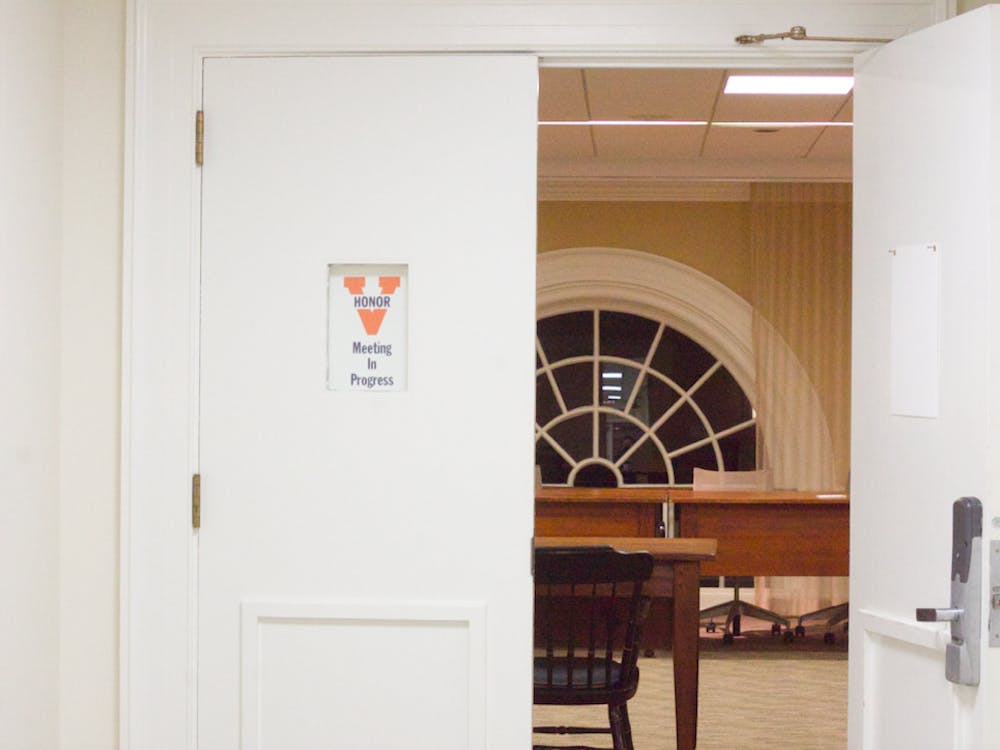Upon returning to grounds this summer, I was delighted to see the Rotunda was finally open. I had not seen the Rotunda since I attended Days on the Lawn my senior year in high school, and I was excited to take a closer look. As I explored the Rotunda, I noticed two plaques which stopped me in my tracks. They were an “honor roll” in “memory of the students and alumni of the University who lost their lives in the military service of the Confederacy.”
Last semester, VJ Jenkins made some compelling arguments as to why the University should remove these plaques. I would like to continue the conversation and offer some new arguments.
The Rotunda is the centerpiece of the University. As a UNESCO World Heritage site, it is advertised across the world and one of the first places that visitors encounter at the University. Thus, it is important to consider what message it sends to brazenly display these plaques in such a location. There is a stark difference between memorializing the past and honoring our demons. For one, the diction of an “honor roll” for those “who lost their lives in the military service of the Confederacy” implies sympathy with the cause that they fought for. A cause which stands as an insult to both the hundreds of African Americans who attend and teach here now, and to the slaves who built the very structure on which the plaques stand on.
Furthermore, the plaques are placed in proximity to a separate plaque in memory of “the sons of the University who gave their lives for freedom in the World War.” Usually, there are also several other plaques placed around the Rotunda for other members of the University who died in WWII and Vietnam. Again, it is important to think about the message this sends. We are essentially equivalating the fight for “freedom in the World War” to those who died fighting for a republic whose very foundation was “white supremacy,” as Confederate Vice-President Alexander Stephens so eloquently put it in his Cornerstone Speech. This equivalency stands as an implicit endorsement of that cause. Furthermore, I have no doubt that, when the plaques were erected in 1906, they were meant to serve as an endorsement of white supremacy.
It is important to remember and fully understand our past, both the good and bad parts. Last summer, I worked and gave tours at a Civil War battlefield and a historic slave plantation house. So, I completely understand the importance of preserving our history, and I do not want to erase or rewrite it. 500 out of 600 of enrolled University students at the time eventually served in the Confederate military. Months before Virginia even seceded from the Union, University students took the liberty of replacing the American flag with the Confederate flag. This is history we cannot forget, but it is history we should not honor either. Every soldier who fought for the Confederacy had his own reason for doing so, but in the end they fought in defense of the slavery and white supremacy that their military and political leaders championed.
The University should consider moving the plaques to a display in another location, one which is much less central and much less symbolic. My issue is not with the existence of the plaques themselves, and we should continue to preserve our history. However, although the University is full of rich history, it is much more than simply a repository of the past. It is a living academic institution and home to thousands of students. According to its mission statement, the University provides for the “development of talented students from all walks of life.” Yet, these plaques send the message to talented prospective African American students that they cannot find a home here. Removing these symbols is crucial at a time when black enrollment is only beginning to recover from several years of decline. Moreover, these plaques send an unwelcoming message to black students, faculty and employees and to the rest of the world.
The Civil War ended over 150 years ago, but we live in a world where, as University alumnus and Jamelle Bouie, the chief political correspondent for Slate, pointed out white nationalism is ascendant within the ranks of our government. It was only last semester Douglas Muir, an executive lecturer in the Engineering and Darden School, so ignorantly compared Black Lives Matter to the Ku Klux Klan. The stakes here are not abstract and African Americans deserve to feel at home at this University. As the bicentennial approaches, we must consider what values we choose to reflect. By renaming Jordan Hall to Pinn Hall, previously named for a eugenist, the University redefined itself. We can do it again by moving these plaques elsewhere.
Weston Gobar is an Opinion columnist for The Cavalier Daily. He may be reached at opinion@cavalierdaily.com.





